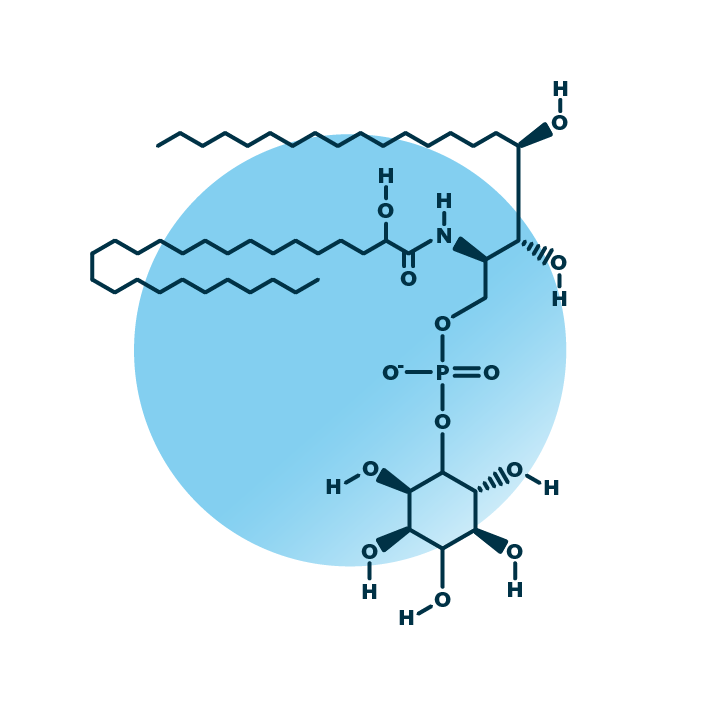About the structure and biological function of IPC
Structure. Inositolphosphoryl-ceramides (inositol-P-ceramides, or IPC) belong to the group of phosphosphingolipids within the sphingolipids. Their structure consists of a ceramide backbone bound to a phosphorylinositol molecule. The ceramide backbone contains two hydrocarbon chains: a long-chain base which is linked to a fatty acid via an amide bond. The fatty acid and the long-chain base can be of variable length, hydroxylated, and contain double bonds.
Function. Inositolphosphoryl-ceramides are substantial components of biological membranes in yeast. In lipid rafts of the cell membrane, IPC lipids interact with membrane proteins with signaling functions – a role similar to those of sphingomyelins in animals. IPC ceramides are also the precursor for further complex glycophosphosphingolipids. Further, the biosynthesis of IPC lipids reduces the pool of intracellular ceramide and thus inhibits programmed cell death.

